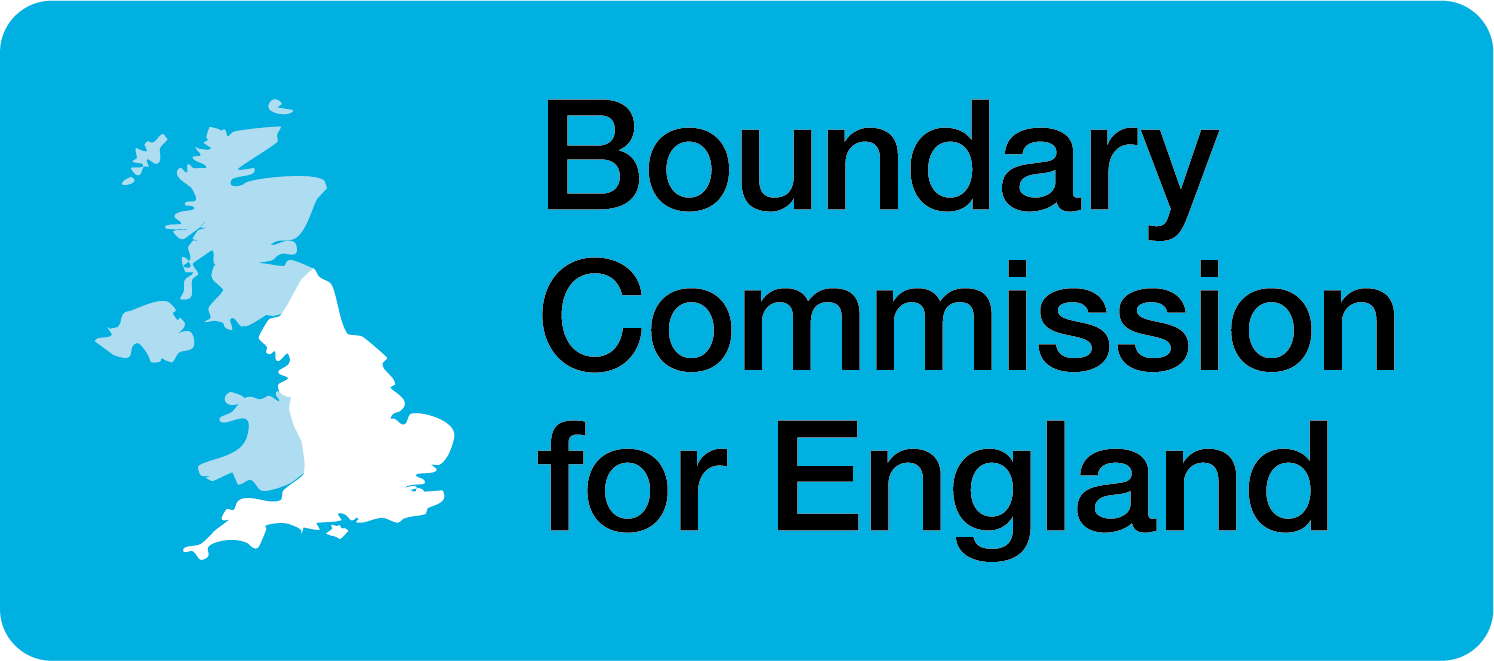Summary
Who we are and what we do – ‘The 2023 Review’ 1
1 Further details about the BCE and 2023 Review are published on our website: https://boundarycommissionforengland.independent.gov.uk/
The Boundary Commission for England (BCE) is an independent and impartial non-departmental public body, which is responsible for periodically reviewing Parliamentary constituency boundaries in England.
We are currently conducting a review on the basis of legal rules most recently updated by Parliament in 2020, which will conclude with a final report and recommendations from us by 1 July 2023. The rules require there to still be 650 constituencies across the UK, but more equally distributed across the four parts of the UK, which will see the number of constituencies in England increase to 543. Each (apart from five ‘protected’ constituencies) must also contain a number of electors that is no smaller than 69,724 and no larger than 77,062 (as at the fixed date of 2 March 2020).
We published our initial proposals for the new Parliamentary constituency boundaries in England on 8 June 2021 and there have been two rounds of statutory consultation relating to those to which we received over 45,000 responses. We have considered all of the comments received and taken them into account in developing our revised proposals, which we are now publishing for final consultation. For each region, a full report sets out a summary of the responses received to previous consultation on our initial proposals, our analysis of those, and the conclusions we have reached as to how the proposals should be revised as a result. The Appendix to each report contains details of the composition of each constituency we are now proposing, and maps to illustrate these can be viewed on our website or in hard copy at a local place of deposit.2
Back to topWhat are the revised proposals for the South East region?
We have revised the composition of 27 of the 91 constituencies we proposed in June 2021, and maintained our initial proposals for the remainder. We have revised the name of 19 of our initially proposed constituencies. Our revised proposals would leave 15 existing constituencies in the South East region wholly unchanged, and three unchanged except to realign constituency boundaries with local government ward boundaries.3
As it is not always possible to allocate whole numbers of constituencies to individual counties or unitary authorities, we sometimes group these into sub-regions, meaning some constituencies cross county or unitary authority boundaries. After consideration of the responses to the sub-regions in our initial proposals, our revised proposals are based on unchanged sub-regions, as follows: Berkshire4/Hampshire5/Surrey (allocated 39 constituencies); Buckinghamshire6 (allocated eight constituencies); Sussex7 (allocated 17 constituencies); Isle of Wight (allocated two constituencies); Kent8 (allocated 18 constituencies); and Oxfordshire (allocated seven constituencies).
In Berkshire, Hampshire, and Surrey, we have retained one county-crossing constituency between Berkshire and Surrey, and one between Surrey and Hampshire, with minor alterations to what we initially proposed. We have also proposed minor revisions to a series of constituencies between Farnham and Bordon and Reigate, such that those settlements would not be divided between constituencies; we have additionally proposed a minor reconfiguration around Cobham and Stoke D’Abernon as well as the inclusion of Englefield Green and Virginia Water in the Windsor constituency instead of Egham. In Sussex, we have proposed the same county-crossing constituency between East and West Sussex, again with minor alterations, such that the Hartfield ward can be included in a revised Sussex Weald constituency. We have proposed major revisions to five West Sussex constituencies comprising rural South Downs villages and the built-up coastal strip; and minor revisions relating to Brighton. In the Buckinghamshire sub-region we have proposed minor revisions near Beaconsfield to include the old town in the same constituency as the rest of the town. In the Isle of Wight sub-region we have proposed substantive revisions to both the eastern and western constituencies. In the Kent sub-region we have proposed minor revisions outside Ashford around Charing, as well as including Hawkhurst and Sandhurst ward in Tunbridge Wells, such that it can be retained wholly unchanged. In the Oxfordshire subregion we have proposed minor revisions near Wantage.
Back to topHow to have your say
We are consulting on our revised proposals for a four-week period, from 8 November 2022 to 5 December 2022. We encourage everyone to use this final opportunity to contribute to the design of the new constituencies – the more views we hear, the more informed our decisions will be when we make our final recommendations and report to Parliament. Our consultation portal at www.bcereviews.org.uk has more information about our revised proposals and how to give us your views. You can also follow us on Twitter @BCEReviews or at facebook.com/BCEReviews.
Back to top2 A list of places of deposit is published on our website (as above).
3 Where the Order to make such wards was made by 1 December 2020.
4 Council areas of Bracknell Forest, Reading, Slough, West Berkshire, Windsor and Maidenhead, and Wokingham, hereafter referred to together as Berkshire.
5 Council areas of Portsmouth, Southampton, and Hampshire: hereafter referred to together as Hampshire.
6 Council areas of Buckinghamshire and Milton Keynes: hereafter referred to together as Buckinghamshire.
7 Council areas of Brighton and Hove, East Sussex and West Sussex: hereafter referred to together as Sussex.
8 Council areas of Medway and Kent: hereafter referred to together as Kent.
Back to top